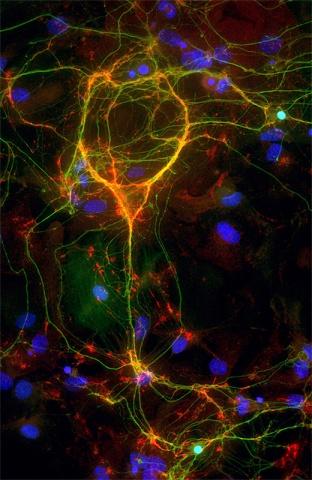
In May 2020, members of the Duke Neurology Department contributed to nine new peer-reviewed journal articles. At the clinical level, a new study protocol will test the safety of a promising drug for reducing the consequences neural inflammation, while another shares more than a decade of knowledge about improving patient engagement in ALS research. Other studies, meanwhile, answered questions about how our brains and minds function, such as a NeuroImage study that found older and younger adults used different regions of the brain when performing the same task. Read short summaries of these studies, and find links to the original articles below.
Headache and Facial Pain
- In the latest issue of Headache, lead authors Elizabeth Kearney, PA-C and Sweta Sengupta, MD, as well as Timothy Collins, MD share a case report of a chronic migraine patient experiencing visual aura for the first time after starting a new therapy, galcanezumab‐gnlm. Read their full case report here.
Neuromuscular Disease
- Patient engagement in research is an increasingly important, often unmet need. First author Rick Bedlack, MD, PhD, and colleagues draw on more than a decade of experience in this field discussing the ALS Clinical Research Learning Institute (ALS-CRLI), which facilitates direct interactions between researchers and people with ALS and their caregivers. Read about the ALS-CRLI, and lessons learned, in Amyotrophic Lateral Sclerosis and Frontotemporal Degeneration.
Stroke
- Wuwei “Wayne” Feng, MD, MS, and Shreyansh Shah, MD, as well as Pratik Chhatbar, PhD, and Orthopedics’ Jody Feld, DPT, PhD, discuss a promising new study involving the use of transcranial direct current stimulation (tDCS) in a small, sham-controlled trial of 50 post-stroke patients. Read what they wrote about that “exciting and promising study” here.
- Feng also contributed to a study that found a promising therapeutic target and drug candidate for stroke: the major NO metabolite S-nitrosoglutahione (GSNO). The team investigated the efficacy of GSNOR inhibition in a clinically relevant middle-aged cerebral ischemia and reperfusion (IR) mouse model of stroke. Daily treatment significantly improved neurological score, survival rates, and other outcomes. Read the full article in the latest issue of Brain Research.
Translational Brain Sciences
- Repetitive transcranial magnetic stimulation (rTMS) holds potential to enhance working memory, but a new study by Simon Davis, PhD, and colleagues found that the benefits of rTMS appear to be site-specific. This study’s application of rTMS to the left lateral parietal cortex in older adults found that rTMS reduced working memory, contrary to previous studies examining rTMS applied to other areas. Read that Brain Stimulationstudy here.
- A new iScience study by a research team including Wolfgang Liedtke, MD, PhD, and colleagues indicates the TRPV ion channel appears to play a role in chronic tuberculosis. The research team found that TRPV4-deficient mice were healthier in late tuberculosis than their normal counterparts, indicating Mycobacterium tuberculosis uses TRPV in its later reproduction--and indicating the ion channel as a potential therapeutic target. Read that article here.
- In the latest issue of the Journal of Neuroscience Research, postdoctoral associate (and senior author) Shiyi Wang, PhD, discusses the role of PDZ proteins in controlling channel activity, regulating channel cell surface density, and influencing channel-mediated downstream signaling events. Read that article here.
- In the latest issue of the Journal of Alzheimer’s Disease, Daniel Laskowitz, MD, MHS, contributed to the MARBLE study protocol. In addition to testing the safety of the CN-105 memetic peptide drug, this study will also examine whether perioperative CN-105 reduces the postoperative neuroinflammation and the severity of perioperative neurocognitive disorders. Read the protocol here.
- Simon Davis, PhD, contributed to a new study that broadened our understanding of how neural networks in the brain change as we age. The team compared the univariate activity, network connectivity and cognitive performance in brains of younger and older adults performing a working memory task. Read what they discovered about the mechanisms of age-related network reorganization in NeuroImage.